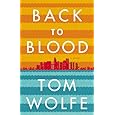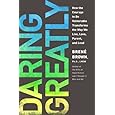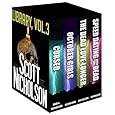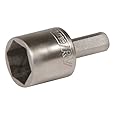hide his life waterway that has rarely been explored - until now
A. Scorching morning at the San Fernando Valley and I'm up and down Balboa Boulevard, parks and land on both sides of the road, lost GPS on my speakers dashboard paused, overcome by a destination without arcane postal code . I see an assistant to empty a container park and pull to ask directions. He eyes, puzzled. I wonder if he is deaf and repeat the question. He still looked confused. "At the River?" Yes, I replied. Where is the river? He shakes his head. "What river?"
I found an old woman in a straw hat walking her terrier and ask the same question. She looked puzzled. "This river, honey?" The river is supposed to go kayaking, I answer. She looks at me with pity, as if I had a stroke. "I do not think you're in the right place."
But I am. Low whistle, almost invisible in the park and the road above, is the Los Angeles River. A river of water, fish, tadpoles, birds, reeds, banks, a river that flows 52 miles bordering Burbank, North Hollywood, Silver Lake, downtown and Compton and empties into the ocean Pacific in Long Beach. A regular river, except that most of the Lakers is a secret. I ask three other people and receive the same blank look until a guard finally confirmed that indeed there is a river at the bottom of a ravine 150 feet away from everything.
There among the reeds, a dozen small bob green and red kayaks and people with helmets and life jackets are rising inside. This is the first season in Los Angeles River Expeditions, a pioneering effort to restore a river that disappeared from the consciousness of the city nearly a century. "Welcome," said George Wolfe, the group's founder. "I hope you're ready for adventure." We are pushing the current.
Until recently, this visit would have been considered not only crazy, but illegal. The municipal authorities of the river encased in concrete in 1930, becoming a channel fight against the floods that was synonymous with pollution and banned for boaters. For decades, languishing in the dark, with the exception of Hollywood with films such as storm drains in Grease and Terminator 2. Now, however, officially opened the boat trips, kayaks and canoes in particular. Campaigners hope it is the first step towards transformation. "This is an important step, and hopefully more to come," said Eddy Charles, a board member of Friends of the Los Angeles River, and part of this question in his kayak through brambles. "If you think of the river as a palette of white, people will create all sorts of wonderful things."
The kayak is the latest twist in the water wars of California, a saga immortalized in Roman Polanski's Chinatown in 1974 film, an exploration of neo-noir intrigue and betrayal with Jack Nicholson and Faye Dunaway established in 1930 in the state battles over land rights and water. The river, fed by the streams of the Simi Hills in Canoga Park, originally provided food, water and transportation for Indians and Spanish settlers Gabrielino. After the United States, Mexico took control of the city needs beyond the river. An aqueduct completed in 1913 directed water from the Owens River in the mountains of the Sierra Nevada to Los Angeles, ending dependence on the Los Angeles River. Floods prompted his conversion - desecration, some critics say - in a glorified drainage ditch. And it remained for decades the butt of jokes, a garbage dump, out of sight and mind, except when it is used as a backdrop for the Hollywood racing and persecution.
Its nascent renaissance this summer as a source of recreation and environmental awareness is in the middle of a water fight renewed. Diverted Owens River is not enough - Los Angeles County is home to about 10 million people, not to mention the large farms further south claiming for irrigation. Governor Jerry Brown defends a proposed $ 14 billion (£ 9 billion) tunnel to divert water from northern California cities thirsty Southern California and farms. Two tubes, each 33 feet wide, lead a portion of the Sacramento River - up to 9,000 cubic meters per second - for existing pumps and aqueducts, supposedly to end conflicts around water that Ronald Reagan , Arnold Schwarzenegger, and a number of other governors failed to resolve.
- "This will never be free of controversy and conflict," Brown said at a press conference last month. "But today we know much more than that made at the time. Here we are, 30 years later, with much more knowledge of science and much more. " The United States Secretary of the Interior Ken Salazar said the new tunnels end "epic water wars that have ravaged this state for decades."
- Perhaps, but the plan must overcome resistance from environmentalists who say it will kill the salmon farmers who complain about the cost. Some analysts believe that water wars will continue, with Southern California in search of remedies increasingly desperate shortage of water.
"We need to start thinking in new ways and use words differently. Whether you call it a drainage ditch which is treated as a drainage ditch. Call it a river and treat it as a river, "says Wolfe, head of the expedition, as our group rowing upstream in a groove. A writer with a passion for boating, Wolfe and a few others have traveled first to the entire river for three days in 2008. It was technically illegal - the city does not want anyone in your drainage channel - but the police dismissed challenges to a filming permit (legitimate), a magical place when it comes to police in Los Angeles and Long Beach rose
Find best price for : --Angeles ----Wolfe
----Wolfe ----Brown
----Brown ----Dunaway
----Dunaway ----Faye
----Faye ----Nicholson
----Nicholson ----Jack
----Jack ----Balboa
----Balboa ----Fernando
----Fernando --
--
Blog Archive
-
▼
2012
(480)
-
▼
August
(37)
- The Los Angeles river lives again
- Cameras to monitor hospital staff
- What does the NPPF really mean by sustainable deve...
- Voting Jenny Jones for London mayor is a luxury I ...
- Obama urges China to improve rights record
- The talking penguin's guide to climate change
- Coalition makes U-turn on nuclear energy subsidies
- Anna Chancellor: My family values
- Muddy history books borrowed from the ocean floor ...
- Is the EU 'juking the stats' of its carbon schemes...
- Germany's careful toilet-flushing is a drop in the...
- The glaciers are still shrinking - and rapidly | J...
- Sheffield mayor debate has yet to ignite - but are...
- £540m insulation scheme targets fuel poor households
- The Pirate party rises as German politics is all a...
- James Cameron may kill the Kraken but not our jour...
- Cyclists who are a law unto themselves make a reci...
- Live discussion: are councils doing enough to go g...
- Greens to name long-shot presidential hope Stein t...
- Can cheap food be produced sustainably? | Leo Hickman
- British democracy in terminal decline, warns report
- Round up: local government priorities
- Saturday interview: Lucy Lawless - Xena the Ecowar...
- What Leveson should do about regulation - the unsu...
- Manchester's MadLab spends time with the FBI
- Activists hail success of Twitter storm against fo...
- Society daily 07.06.12
- Women of the woods, come forward! Your place in hi...
- Africa's tallest building could catapult continent...
- "HULK SMASH GM" - mixing angry Greens with bad sci...
- Cleveland Occupy arrests are the latest in FBI's p...
- University guide 2013: York St John University
- Dilma Rousseff must veto Brazil's devastating new ...
- Local guidelines for retrofit must not be a planni...
- Yorkshire's beetle ark beats river floods
- Chen Guangcheng arrives in US but fears remain for...
- Chen Guangcheng arrives in US
-
▼
August
(37)
0 comments:
Post a Comment